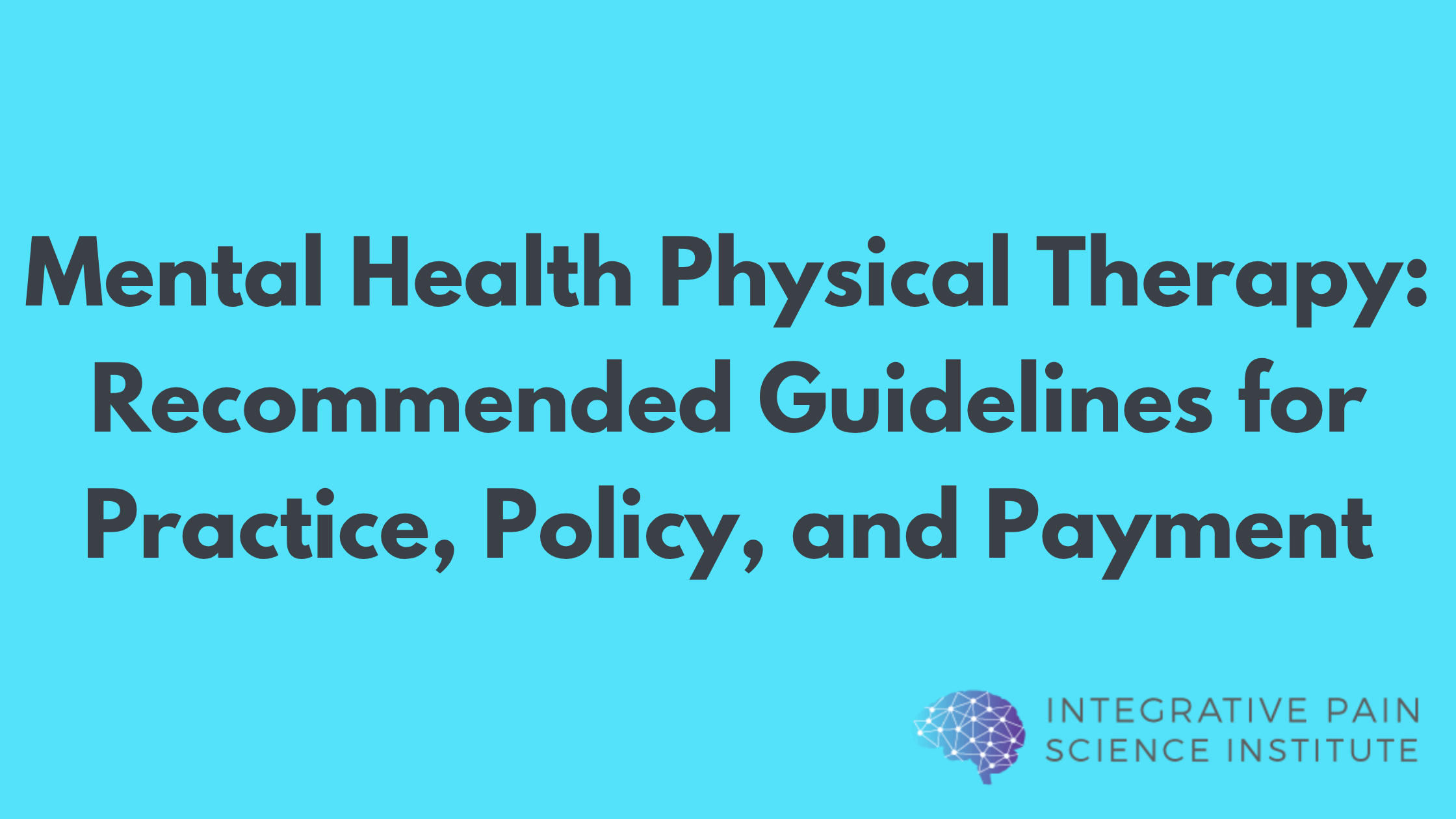Providing regular care for patients and families can take an emotional toll on healthcare providers, including physical therapists and others who care for people with chronic health conditions.1 Workplace stress and personal issues can create challenges for practitioners who intend to give high-quality compassionate care to their patients, and the connections between compassion fatigue and burnout among healthcare providers is well-studied.2 However, physical therapists’ perceptions of evidence-based stress reduction strategies such as mindfulness are much less understood. Mindfulness, a simple practice that aims to increase emotional resilience, strengthen coping skills, and reduce stress, is considered “integral to the professional competence of physicians” because it promotes clearer decision-making and better emotional regulation.3 A November 2016 research report published in the Journal of Physical Therapy Education explored how physical therapists (PTs) conceptualize the practice of mindfulness after a series of practical applications.

Mindfulness Theory, Science and Practice
Mindfulness is a relatively simple practice of mediation and body awareness. The most basic purpose of mindfulness mediation is to develop stillness with focus on one’s breathing in order to bring thoughts and emotions to the forefront of the mind.4 These thoughts are then able to be viewed in a nonjudgmental way, which allows for kindness and acceptance towards oneself. This shifts the meditator’s perspective and creates a reframed psychological state, which helps one view choices and events in a new light that is not influenced by habitual or emotional responses.
Mindful awareness has been shown to utilize a distinct neural pathway.5 Functional MRI scans reveal that the resting mode of the brain utilizes midline connectivity. This causes inattentiveness to thoughts and emotions, because this pathway allows for greater automaticity as emotional habits influence actions without much processing in the prefrontal cortex. Attending to one’s body sensations puts the brain in mindful mode, also known as salience mode, which utilizes lateralized brain structures that transmit sensory data to the prefrontal cortex.6 Evidence suggests that the two modes are interconnected, and that increased meditation causes the mindful mode to inhibit some processes of the resting mode. This allows for the alteration of habitual stress responses through mindfulness practices.3

Mindfulness Training in Physical Therapy
Researchers investigated eight physical therapists from a variety of practice types, experience levels, and backgrounds. The study consisted of 10 weeks of individual mindfulness education, culminating in an interview about each participant’s feelings toward mindfulness. Ultimately, four main themes were identified that persisted throughout all of the therapists’ perceptions of mindfulness.
Theme #1: labeled by the researchers as “I Need to Fix This,” was characterized by the acknowledgement of stressors both in and outside of the workplace, and a desire to learn about mindfulness as a way to relieve those stressors. All of the participants also felt that identifying the events and habits that caused their stress was beneficial to their state of mind. Additionally, each PT found it challenging to practice mindfulness, as it put them in a state of “non-doing” rather than action.
Theme #2: “I Pause and I Notice, but this is Hard,” was developed from participants’ responses after they began to practice mindfulness strategies. They realized that drawing their attention to their own emotions was beneficial for their stress regulation and decision-making. They also acknowledged that the process was difficult because they were used to being in a constant relaxed brain state where emotional habits are in control of most actions. The PTs also expressed a clearer understanding of events that occurred with patients after they reframed their perceptions of the appointment or day.
All of the PTs enumerated tangible benefits from practicing mindfulness, which made up the third theme (Mindfulness Works). Responses included an increased ability to separate emotional reaction from physical and mental response, consistent identification of problem behaviors related to work-induced stress, and an improved feeling of overall well-being. Some PTs remarked that they felt better equipped to treat certain patients after reframing the situation, and that they were able to slow their minds down outside of work.
Theme #3: “I Need Support,” was formed out of the PTs’ desire to continue practicing mindfulness with an experienced mentor. Each participant noted the number of benefits they experienced as a beginner and wanted to continue learning about and sharing mindfulness with others. Multiple responses included the idea that everyone should be practicing mindfulness as well.
Conclusions and Recommendations for Physical Therapy Practice
A clear relationship between experience with mindfulness and overall well-being, job satisfaction, and compassion was observed across all 8 PTs. The researchers concluded that mindfulness is a simple, easy to learn, and transportable practice that provides a variety of evidence-based benefits for healthcare providers. While it is currently underutilized among physical therapists, mindfulness has been identified as a lasting, cost-effective tool for reducing stress with minimal time and effort required.
Recommendations included introducing mindful practice to PT students before they enter the workforce, and forming initiatives, courses and certification training to teach mindful practice to practicing physical therapists. At the college level, students would have the opportunity to learn about the benefits of mindfulness and be prepared to manage the wide range of stressors associated with both college and work as a physical therapist. Employers that foster mindful practice initiatives would only benefit from having PTs who are more patient-centered, productive, and better able to manage stress. Similarly, practices can include information about mindfulness in orientation materials and meetings or create time and space for stress reduction in the workplace. Future research in the field may include an exploration of the impact of mindfulness on compassion fatigue, patient satisfaction, and patient outcomes related to chronic pain and noncommunicable lifestyle-related conditions.
REFERENCES:
- Zeidner M, Hadar D, Matthews G, Roberts RD. Personal factors related to compassion fatigue in health professionals. Anxiety Stress Coping. 2013;26(6):595–609.
- Campo MA, Weiser S, Koenig KL. Job strain in physical therapists. Phys Ther. 2009;89(9):946–956.
- Epstein RM, Siegel DJ, Silberman J. Self-monitoring in clinical practice: a challenge for medical educators. J Contin Educ Health Prof. 2008;28(1):5–13.
- Smith SA. Mindfulness based stress reduction: an intervention to enhance the effectiveness of nurses’ coping with work-related stress. Int J Nurs Knowl. 2014;25(2):119–130.
- Farb NA, Segal ZV, Mayberg H, et al. Attending to the present: mindfulness meditation reveals distinct neural modes of self-reference. Soc Cogn Affect Neurosci. 2007;2(4):313–322.
- Lutz A, Brefczynski-Lewis J, Johnstone T, Davidson RJ. Regulation of the neural circuitry of emotion by compassion meditation: effects of meditative expertise. PLoS One. 2008;3(3):e1897.



